Coca-Cola’s journey from a simple medicinal tonic to a global cultural icon has had a remarkable influence on various aspects of pop culture, including fashion. The 1980s, in particular, saw Coca-Cola branching out into the realm of clothing, creating a distinct and memorable fashion trend. This period was marked by the collaboration between Coca-Cola and the Murjani Corporation, with designs crafted by the then-rising star Tommy Hilfiger. The result was a line of vibrant, bold apparel that became emblematic of 1980s fashion.
Coca-Cola clothing, especially the iconic rugby shirts, became a must-have item for the trend-savvy youth of the 1980s. These garments featured the classic red and white color scheme, often incorporating the famous Coca-Cola script logo. The designs were simple yet striking, relying on large blocks of color and straightforward branding to make a statement. This fusion of bold aesthetics and brand loyalty turned Coca-Cola apparel into a symbol of the era, capturing the carefree and vibrant spirit of the decade.
As fashion trends tend to be cyclical, Coca-Cola clothing has seen a resurgence in recent years. Vintage pieces, particularly those from the 1980s, have become highly sought after by collectors and fashion enthusiasts alike. The nostalgia for the distinctive Coca-Cola apparel of that time has breathed new life into these vintage items, making them popular once again on streets and campuses. Whether it’s the allure of a classic Coca-Cola rugby shirt or the timeless appeal of a vintage tag, Coca-Cola’s influence on fashion endures, proving that its impact extends far beyond just being a refreshing beverage.
Iconic 60s Coca-Cola Commercial
How to tell if Coca-Cola is vintage from the logo
Coca-Cola’s logo has undergone several transformations since the company’s inception in the late 19th century. These changes reflect both the evolving aesthetic preferences and the brand’s growth over time. By examining the details of each era’s logo, one can identify the approximate vintage of Coca-Cola items. Below is a detailed guide to help you determine the vintage of a Coca-Cola logo.
1887 to 1890 Coca-Cola logo
- This is one of the earliest Coca-Cola logos.
- The logo features a unique, ornate script that is more elaborate than later versions.
- The design is quite detailed, making it distinctive from the simplified versions that came later.
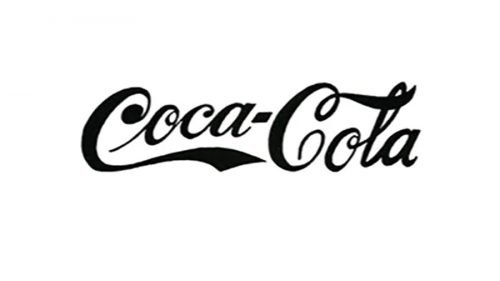
1887 to 1890 Coca Cola logo
1890 to 1891 Coca-Cola logo
- This logo is significantly different from the initial one, featuring very decorative and elaborate typography.
- The letters are ornate, with curly and artistic designs that are not seen in later logos.
- This logo was used for a very brief period, making it quite rare.
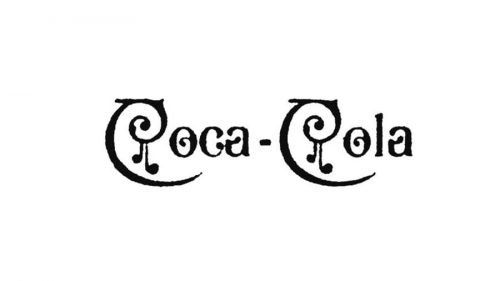
1890 to 1891 Coca Cola logo
1891 to 1899 Coca-Cola logo
- The logo from this era simplified the earlier ornate design.
- The script is more readable but still retains some decorative elements.
- This design marked the beginning of the transition to the more recognizable Coca-Cola script.
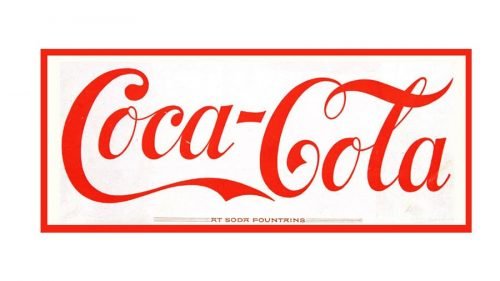
1891 to 1899 Coca Cola logo
1893 to 1901 Coca-Cola logo
- This logo introduced the classic Spencerian script that would become iconic.
- The design is sleek, with flowing letters and a distinct swash underneath.
- This period solidified the visual identity that Coca-Cola would use in the following decades.

1893 to 1901 Coca Cola logo
1889 to 1892 Coca-Cola logo
- This version returned to a more simplified form compared to the 1890-1891 logo.
- The letters are cleaner and more streamlined.
- This design began to establish the brand’s consistent visual theme.

1889 to 1892 Coca Cola logo
1899 to 1903 Coca-Cola logo
- This logo further refined the classic script, making it more elegant and cohesive.
- The swash and flourish elements were toned down slightly for better readability.
- This design was widely used in Coca-Cola’s early advertising campaigns.
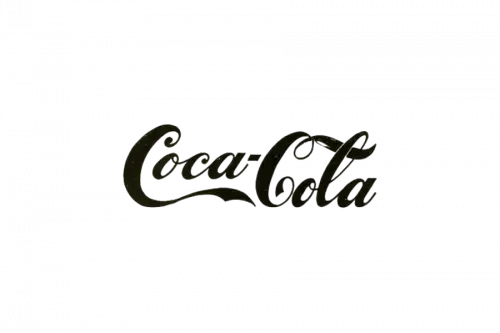
1899 to 1903 Coca Cola logo
1903 to 1934 Coca-Cola logo
- The logo during this period saw minor adjustments to the script to enhance clarity.
- The distinctive swash beneath the “Coca” and “Cola” was standardized.
- This era’s logo is one of the most recognizable and was used extensively in advertising.
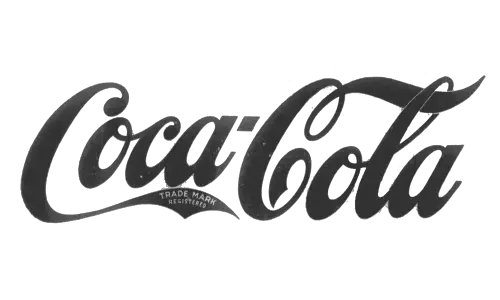
1903 to 1934 Coca Cola logo
1934 to 1941 Coca-Cola logo
- This logo maintained the established script but introduced slight variations in thickness and curvature.
- The swash element became more pronounced.
- This period saw the logo become a central element in Coca-Cola’s global branding efforts.
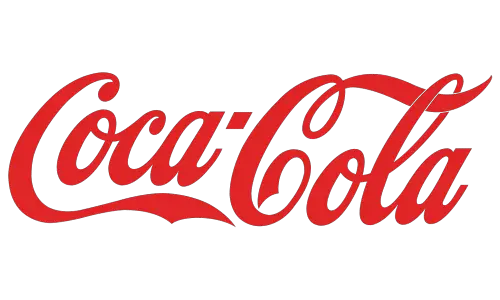
1934 to 1941 Coca Cola logo
1941 to now Coca-Cola logo
- The current logo, introduced in 1941, has remained largely unchanged to maintain brand consistency.
- The script is cleaner and more refined, with slight adjustments to modernize the look.
- This logo has become one of the most iconic and recognizable symbols worldwide.
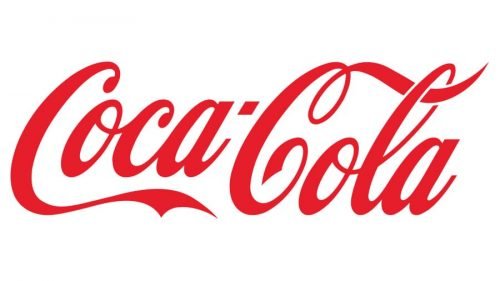
1941 to now Coca Cola logo
1987 to 2009 Coca-Cola logo
- This period saw slight modernization of the classic script, mainly for digital compatibility.
- The logo maintained the same core elements but was adjusted for better clarity on screens and smaller formats.
- This design continued to reinforce Coca-Cola’s brand heritage while adapting to new media.
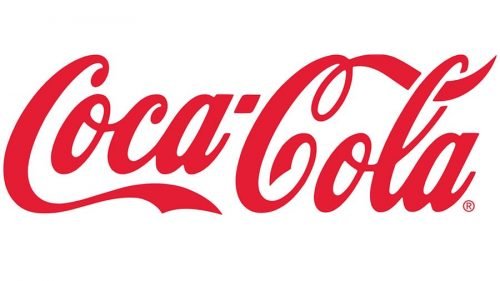
1987 to 2009 Coca Cola logo
How to tell if Coca-Cola is vintage from the tags
The Coca-Cola brand has a rich history reflected in its clothing tags. Over the decades, Coca-Cola tags have evolved in design, materials, and branding elements, offering a unique way to date vintage Coca-Cola apparel. Here’s how you can identify the era of Coca-Cola clothing tags.
Need assistance with vintage tags or labels? Upload a picture on our vintage tag identification page, and we’ll help you out!
1980s vintage Coca-Cola tags
- Classic red and white color scheme.
- Bold serif lettering often featuring the Coca-Cola script logo prominently.
- Tags might include slogans such as “Everything Coca-Cola.”
- Simple, rectangular designs focusing on the brand name.
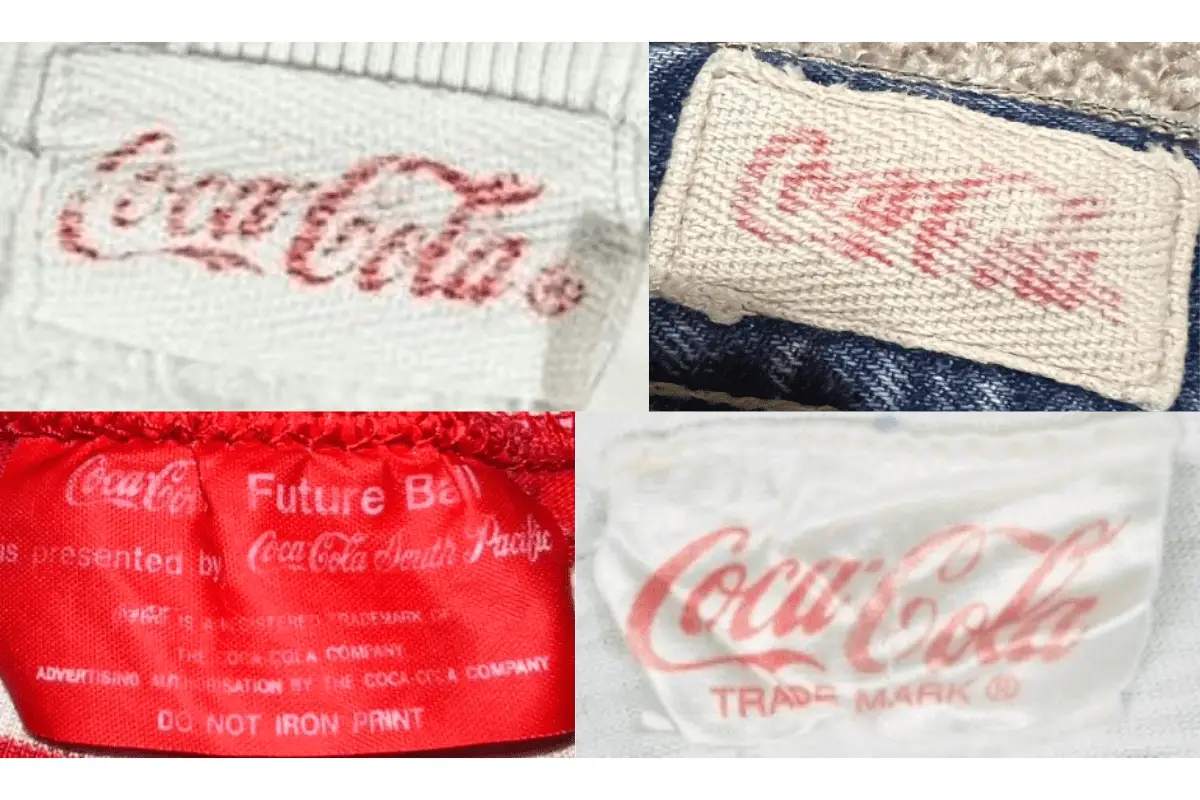
1980s Coca Cola tags
1990s vintage Coca-Cola tags
- Maintained the red and white aesthetic but introduced variations like embroidered elements.
- Tags often had additional information such as “Since 1886” indicating the heritage of the brand.
- Use of both sewn-on and printed tags.
- Some tags featured additional decorative elements, such as holly and berries designs for special editions.
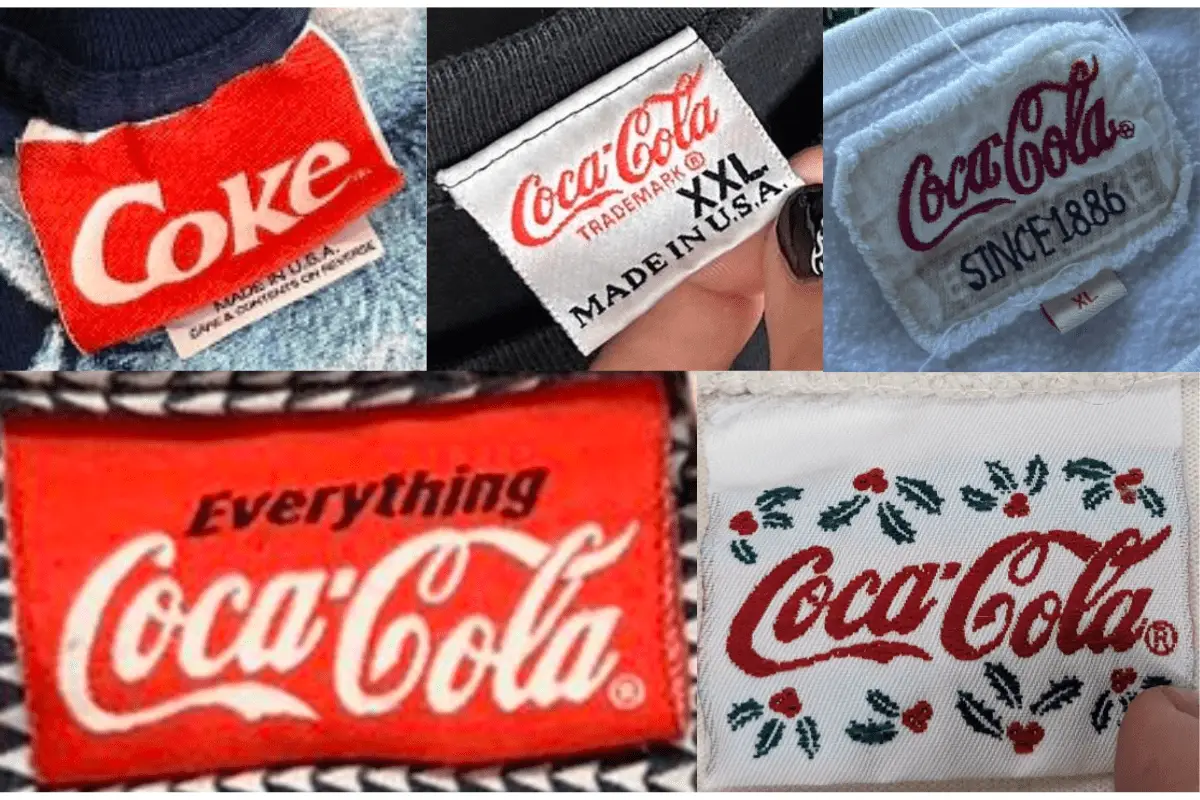
1990s Coca Cola tags
2000s vintage Coca-Cola tags
- Introduction of more modern, minimalist designs while retaining the iconic logo.
- Tags included more detailed size and manufacturing information.
- Use of loop tags became more common.
- Continuation of slogans and additional branding messages on tags.
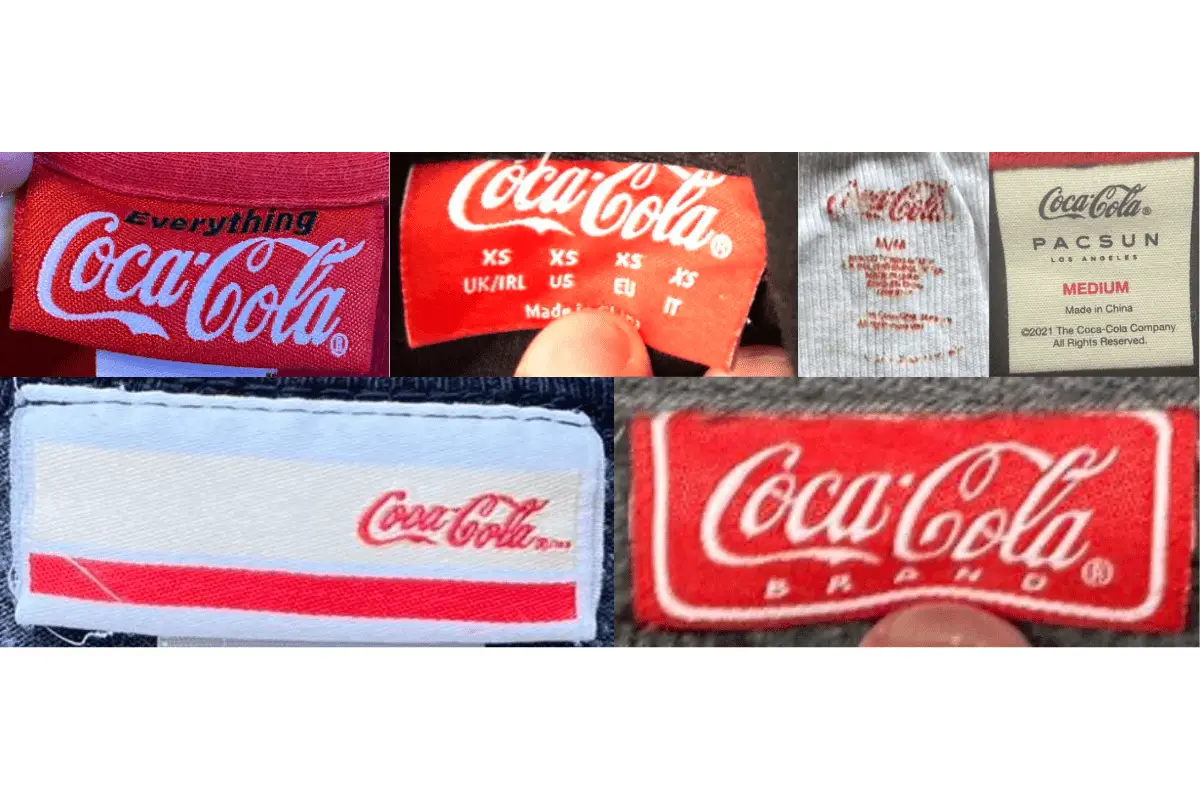
2000s Coca Cola tags
2010s vintage Coca-Cola tags
- Further modernized look with darker colors and varied tag materials.
- Tags often incorporated a mix of printed and embroidered elements.
- Detailed size information and often included care instructions directly on the tags.
- Tags sometimes featured collaboration branding, such as with fashion retailers like PacSun.
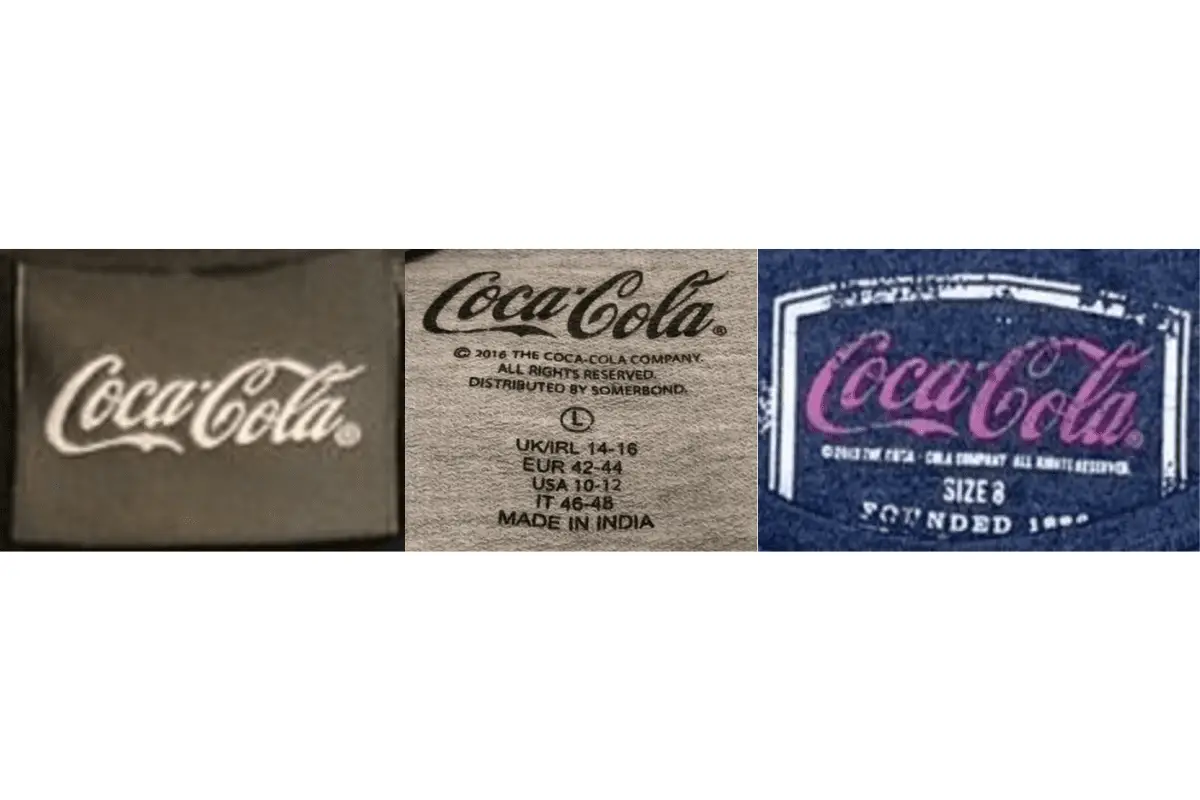
2010s Coca Cola tags
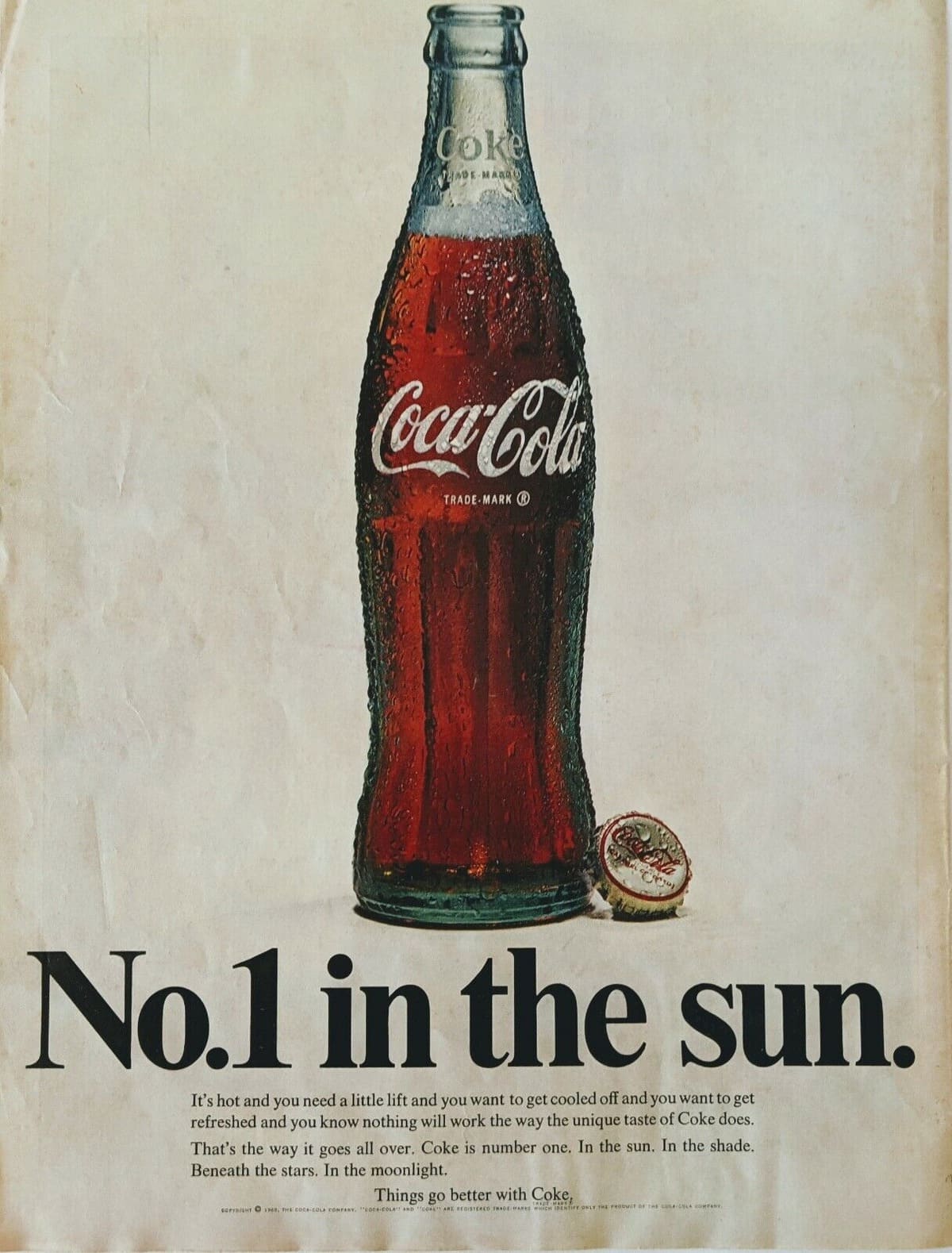




Hello,
I would like some help with the Coca Cola Ware tags that I have uploaded. The garment that they can be found on is 100% Cotton V-Necked top.
Please let me know whether it is a vintage item or not.
Thanks
Vinita